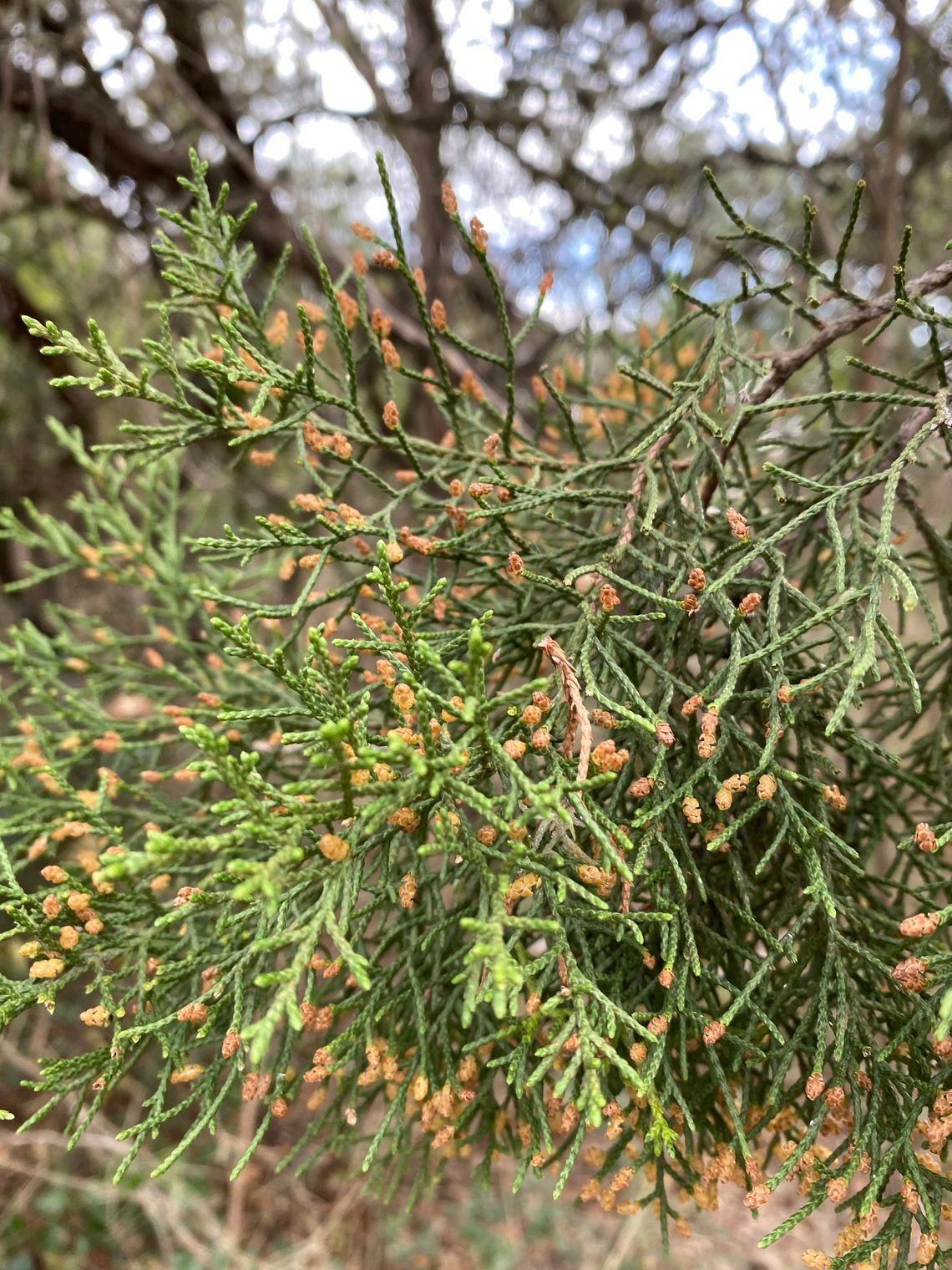So far, 2023’s weather has been exceptionally mild.
It is almost hard to believe that it is not actually spring. Mother Nature makes it difficult to determine the seasons in central Texas. Thanks to our mostly temperate climate in central Texas, winter is more easily defined by the allergy forecast than the thermometer.
Just as the last leaves fall to the ground and most other plants succumb to winter dormancy, “cedar fever” begins. In our part of central Texas, cedar allergy season starts in December and usually finishes up by the end of January, although it sometimes extends into February.
Most trees produce pollen in the spring, and many depend on insects for pollination. Cedar trees are different. They produce pollen in the winter. The colder weather triggers them to release their pollen often after a cold front. Cold fronts reduce the air humidity and change the pressure causing the pollen cones to open.
Insect activity is greatly reduced in the winter, so cedar trees have adapted by becoming wind pollinated. Insects have a much better chance of pollinating flowers than the wind, because they go straight to the flowers. Since insect pollination is much more precise, insect pollinated plants produce less pollen.
Conversely, wind pollination is extremely random, therefore cedar trees produce a significant amount of pollen to improve chances of pollination. Cedar pollen is very tiny and lightweight. It is able to float and drift in the air for miles.
Only the male trees produce pollen. When the conditions are right, cones on the male trees open and release the pollen and can look like they are smoldering.
Even if you aren’t normally susceptible to allergies, there can be so much cedar pollen in the air that it may bother you and overwhelm your immune system. Even though it’s referred to as “cedar fever,” cedar pollen rarely causes fevers over 101.5 degrees. Winter is peak cold, flu and COVID season. If your body temperature gets over 101.5 degrees, then it’s probably not the pollen and you should seek medical care.
The cedar trees that we have in central Texas aren’t true cedars, but actually juniper trees. The most common ones are Ashe Juniper (Juniperus ashei) and the Eastern Redcedar (Juniperus virginiana). These two trees thrive across Central Texas and grow in both black clay and caliche soil.
While male trees have the pollen cones, only the female trees produce the berries. Both Ashe and Eastern Redcedar berries are edible and considered safe to eat, but not necessarily tasty. They contain pungent, resinous compounds that give gin its distinct flavor. More often, they are valued for their medicinal properties.
Cedar/juniper berries are an important source of food for many birds, including the cedar waxwing. These are cute, small, crested birds similar in size and form as cardinals. Cedar waxwings have light brown bodies with blue-gray wings. They have lemon yellow on their bellies and small red tipped wing feathers. They absolutely love all the winter berries and are delightful to watch.
With 25 years of backyard gardening experience, Julie is a plant and nature enthusiast. She lives in Taylor and hosts the “Plow & Hose Organic Gardening in Central Texas” podcast and radio show that airs on KBSR, Black Sparrow Radio every Saturday and Sunday at 9 a.m.
.png)






